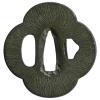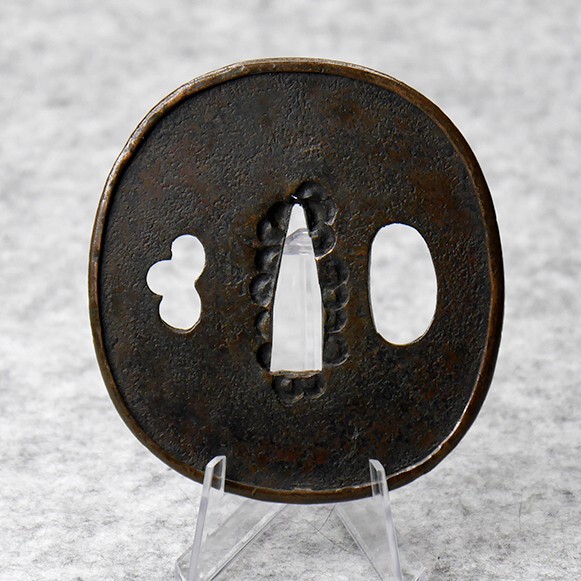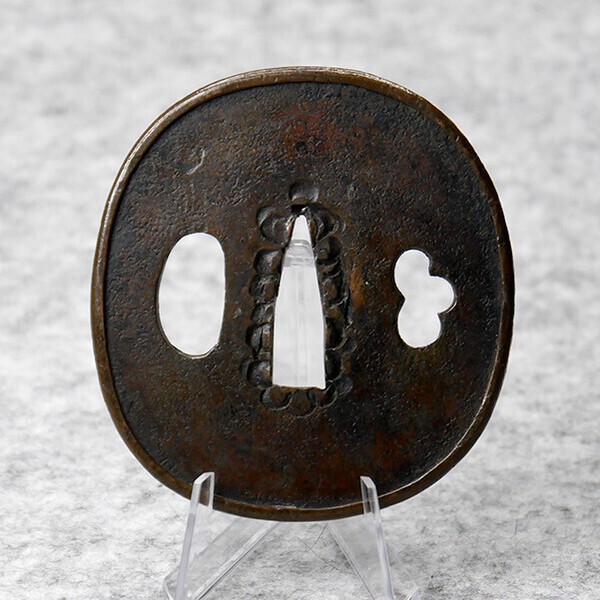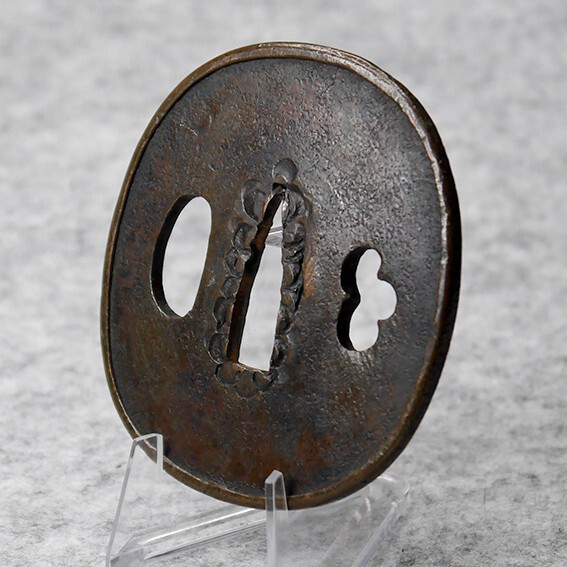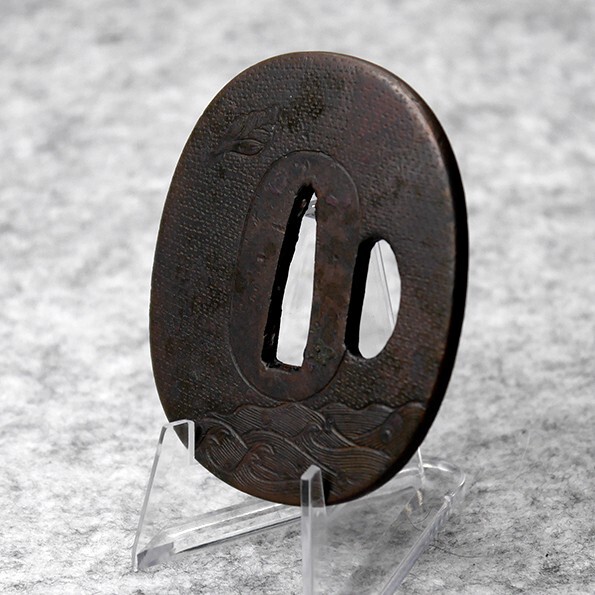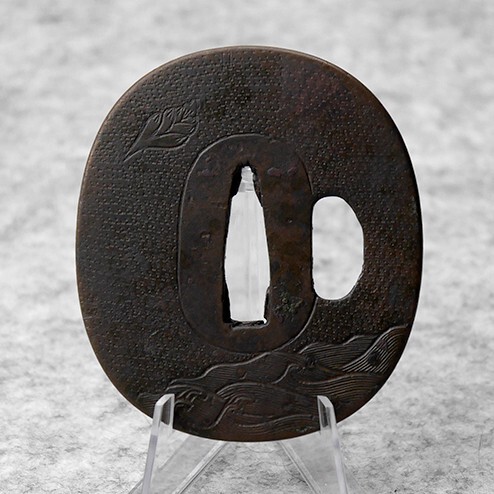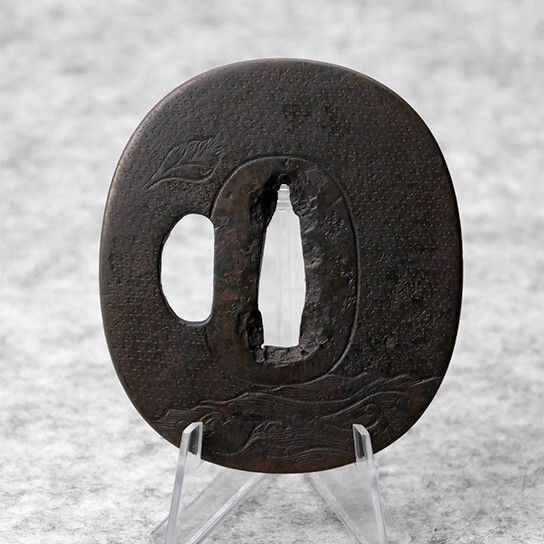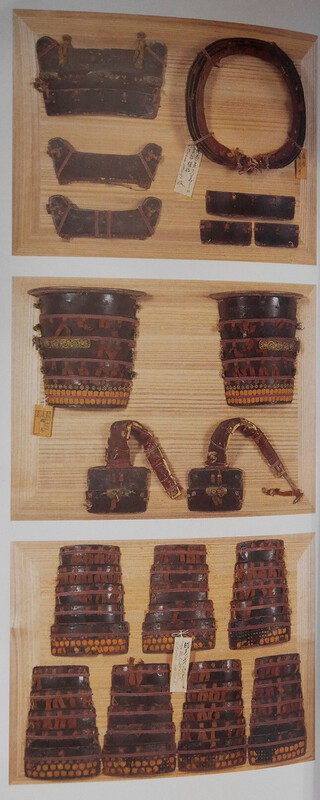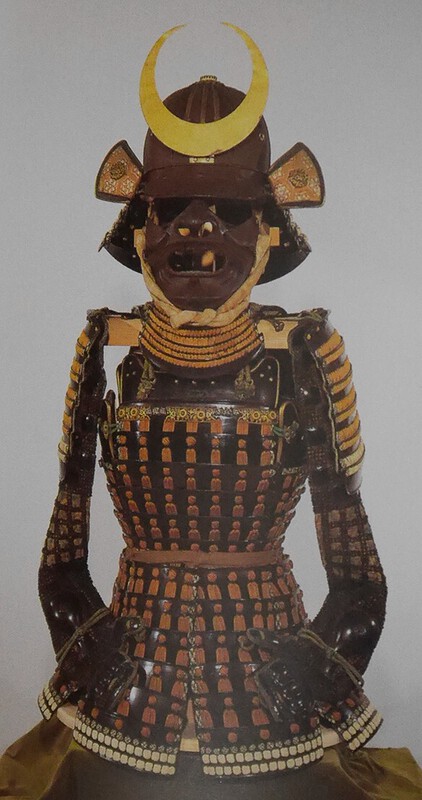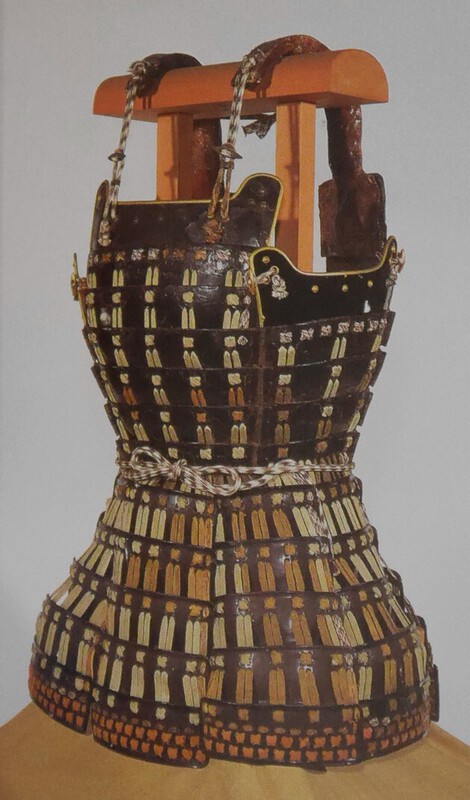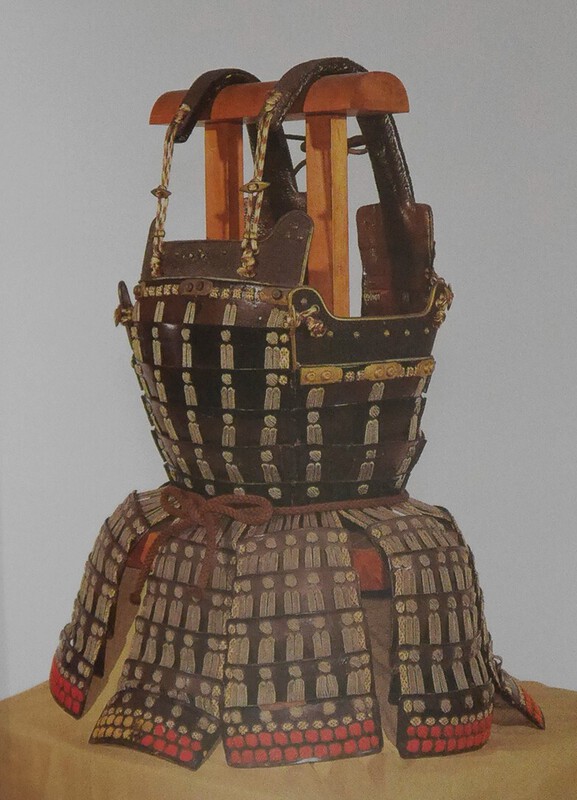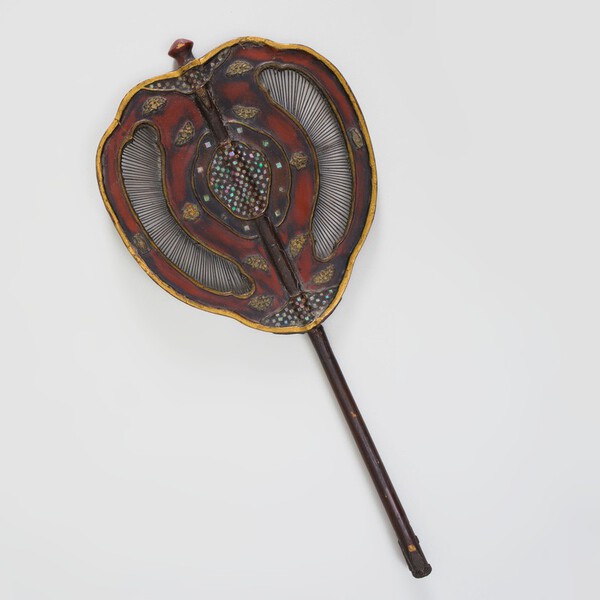-
Posts
276 -
Joined
-
Last visited
-
Days Won
1
Content Type
Profiles
Forums
Events
Store
Downloads
Gallery
Everything posted by Iekatsu
-
1. Ko-Kinko Tsuba with Fukurin, decorated with a stone ground. The plate is slightly warped around the Seppa-dai, wear commensurate with age, stand and box not included. Age: Late Muromachi - Momoyama period Material: Yamagane (copper) Height: 7.35cm Width: 6.9cm Thinckness at Nakago-ana: 0.2cm Thickness at Mimi: 0.35cm Weight: 87.6g Nakago-ana height: 2.75cm Nakago-ana width bottom: 0.8cm Nakago-ana width top: 0.15cm $150 USD + Shipping (Standard postage Worldwide $20USD) 2. Ko-Kinko Tsuba, with a motif of ginger and waves on a stone ground. Some minor rust incursions around the Nakago-ana, wear commensurate with age, stand and box not included. Age: Momoyama period Material: Yamagane (copper) Height: 6.6cm Width: 5.75cm Thinckness at Nakago-ana: 0.35cm Thickness at Mimi: 0.35cm Weight: 82.3g Nakago-ana height: 2.55cm Nakago-ana width bottom: 0.5cm Nakago-ana width top: 0.15cm $135 USD + Shipping (Standard postage Worldwide $20USD) Please get in contact if you have any questions.
-
-
-
Looks like they made a correction, it is now listed as Meiji period, late 19th - early 20th century, still not accurate, but an improvement I guess.
-
My argument is that the evolution to Ita-mono Dou is likely not so clear cut and probably happened in multiple regions at roughly the same time, as Arthur said himself its not a massive leap to transition from scales to plates and it was a logical step as the demand for armour increased in the period in question. There is no doubt that that a style of Ita-mono Dou was produced in Mogami and surrounding regions, there being examples in the Uesugi collection and the famous example donated by Takeda Katsuyori, but this is a relatively isolated area of Japan in the 1560-70's it seems improbable that the style would have spread to the farthest reaches of Japan in a mere decade and if it did why did we not see a proliferation of other eastern style armour elements at the same time. Arthur has provided an example of a Ita-mono Mogami style Dou owned by Inaba Yoshimichi, that was likely manufactured in the Kansai region, likely in the the late 1570's. Arthur also posted the famous Shimazu Ita-mono Mogami Dou now at the Royal Armouries, we know roughly when left Japan (early 1580's), but the date of manufacture is less clear. In Ōyamazumi shrine there are 7 Ita-mono Mogami style Dou in their collection, likely the most in a single location, more research has to be done to date these examples. The Dou below was a gift form Kobayakawa Takakage to Murakami Yoshimitsu to celebrate his sons Yoshisuke's coming of age, unfortunately it's a little hard to nail down a date because we don't know the birth date or age at death of Yoshisuke, but its likely sometime in the 1570's. As for the term Mogami Dou, naming conventions always have to be taken with a grain of salt, it is clear that this term was in use during the Edo period (Sakakibara Kozan utilises it) and it was accepted that Mogami was the origin of this style of Dou, but by this stage you are looking at a Kanto centric world and if we were to take everything at face value from this period the Myochin included everyone and their linage extended into pre-history etc. I think it is important to challenge established knowledge and look forward to this discussion expanding.
-
Seems a little subjective, can you give some specific examples that can be dated, I ask because that type of Dou was also common in central and southern Japan, enough examples surive to imply that they were in extensive use in those regions.
-
Cast fittings in soft metal is not under question, it has a long history, large amounts of cast fittings still exist and are easy to identify and casting sites have been found. Perhaps the real question would be why was there a need to cast fittings in iron when brozne and other copper alloys were easier to work with and the resulting products just as functional.
-
Interesting discussion, could you please outline the evidence that points to an eastern origin?
-
Agreed, Showa period. It's not the only questionable item either.
-
That's right Wakidate (lit. side standing) refers to any Tatemono (crests) mounted on the sides of a helmet bowl, the term for a crest mounted on the rear is Ushirodate (lit. rear standing).
-
While I agree with Ford's comments and general sentiment regarding cast iron Tsuba, casting fittings in bronze and possibly brass is something that we have period evidence for. This statement is incorrect and does not reflect the findings from the dig report and analysis. The site not only included molds, but also furnaces, crucibles and failed casts, but again this has no bearing on the discussion of cast iron fittings.
-
Logan, Wakidate are the crest on the sides of the helmet.
-
If you don't mind sharing, I would still be interested in seeing the Mei.
-
Nice Kabuto Gary, do you have an image of the Mei?
-
Hello Andrew, An interesting subject, while not fundamentally different, Ashigaru armour is often lower quality and tends not to be the focus of most books. I am not aware of any dedicated publications on the topic, but in the back of the books below are Items from the Shoji Izawa collection which is a good place to start to see a bunch of examples. If you are new to armour in general I would take a look at some more generalists books. https://www.amazon.co.jp/-/en/伊澤-昭二/dp/4056028923/ref=mp_s_a_1_1?qid=1665565163&s=books&sr=1-1&text=伊澤+昭二 https://www.amazon.co.jp/Illustration-Sengoku-Armor-Collection-Historical/dp/405603642X/ref=mp_s_a_1_2?qid=1665565163&s=books&sr=1-2&text=伊澤+昭二
- 1 reply
-
- 2
-

-
Very nice work, a high quality piece. Looks like leather on the interior.
-
Something can be hand made and still be mass produced, which is what I think we have here. These come up for sale all the time, and do not fetch very high prices in Japan. Here are some more examples:
-
These Gunbai are definitely not Momoyama period, I'm not even convinced they are Edo, they are clearly mass produced, likely in the Meiji period. There are a lot of them around and the quality of decoration is rather low.
-
Hello Alex, Appears to be an Edo period San-mai Tsuba, pre-Edo San-mai have different characteristics. Do you have an image of the reverse?
-
Hello Julian, The finish on your Zunari is exactly as was intended, it was never a high gloss finish and should be left as is. Gloss finishes require more than just polishing, the type of Urushi and preparation steps are also important.
-
The interior of the Hachi appears to be lacquered black, the plates around the mei have been covered in gold leaf, this is a relatively common practice. Usually it is just a single plate, It would be worth checking the area for any other kanji. Nice armour by the way.
-
Max, Quite a nice looking Dou, I agree with Uwe, id say early-mid Edo period, we will need better photos to give more details.
-
Thanks for the additional image, the shape of the Mabizashi, Byo, Haraidate-dai and Shinogi definitely point to Ichiguchi. It is unlikely that this group worked before the Edo period.
-
Very nice. A little oil should be fine, but replacing the fabric sections will require a professional and the final result will not necessarily reflect the original. I would be interested to see the top of the uppermost plates, are they concave?


